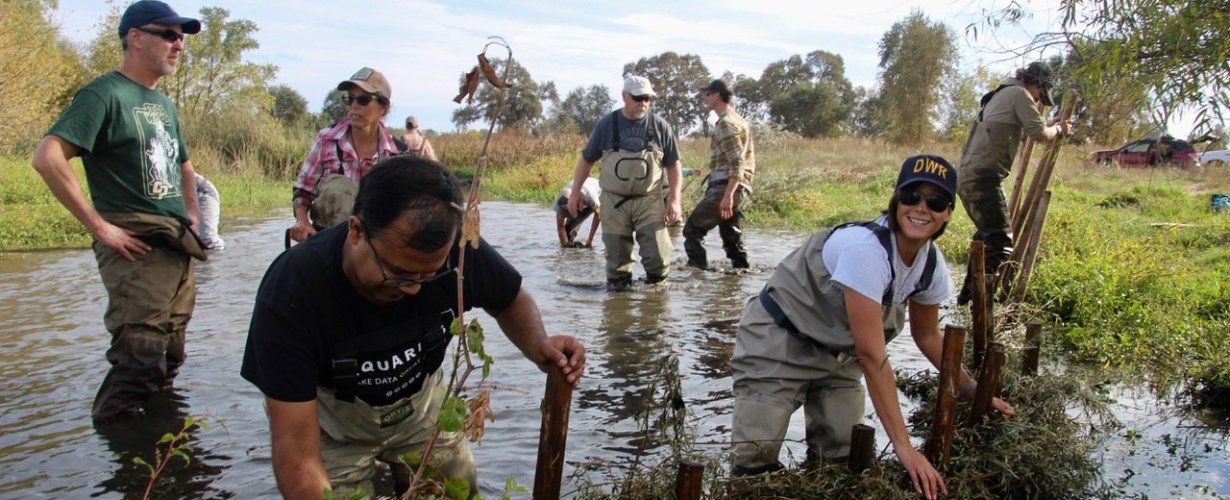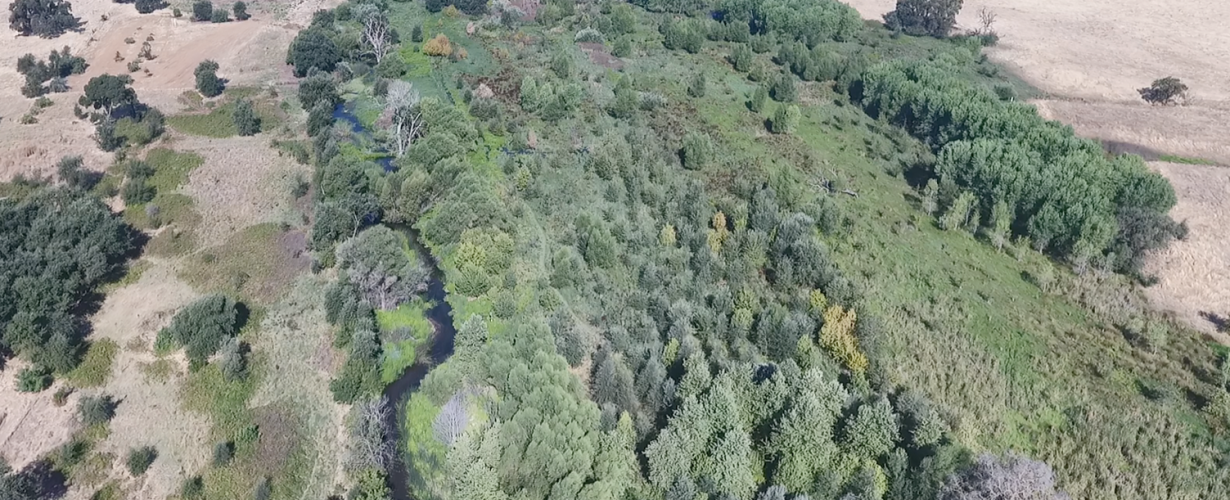
State and federal agency, non-profit, tribal, academic, and restoration professional staff install a beaver dam analog as part of a training held at Doty Ravine.
For the Placer Land Trust and ranchers leasing pasture at Doty Ravine, fire risk and forage loss were of utmost concern. Stream and wetland degradation left a dried-out grassland with diminished cattle-grazing value and increased vulnerability to catastrophic fires. That is when the land trust partnered with the US Fish and Wildlife Service to initiate an innovative solution: start coexisting with the beaver and implement process-based restoration structures on a degraded creek on their land. Rather than removing the beaver, the land trust agreed to enhance and expand their presence by removing levees, reinforcing the beaver dams with posts, and adding more instream structures to increase the durability and extent of the wetland. This collaboration between the land trust, the US Fish and Wildlife Service, ranchers, and the beaver resulted in a 1,800% increase in wetted area.
Through time-tested beaver mimicry and coexistence with beaver, grazing pastures stayed wetter longer into the dry season, healthy forage increased, wildlife habitat expanded, and restored floodplains held more groundwater and acted as effective fire breaks.
To learn more about this innovative coexistence project and associated benefits, read the Placer Land Trust’s article.

This aerial view of Doty Ravine shows the wetted width of the stream, which has increased 1,800% in less than five years.
